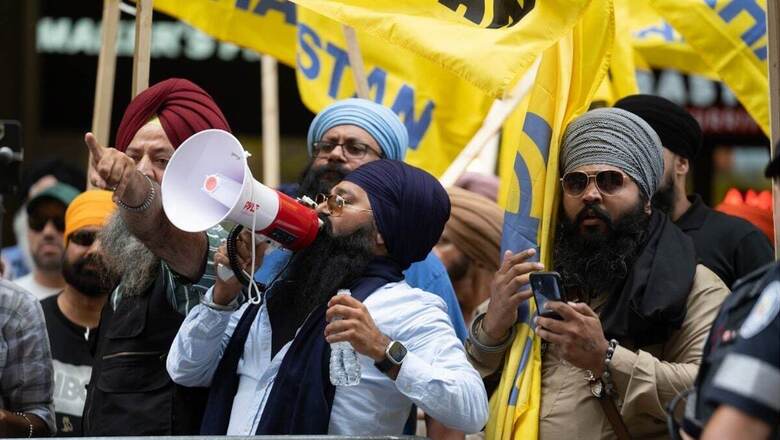
views
Punjab is a few hours’ drive from Delhi for the ambassadors of Canada, the US, UK and Australia. In fact, Canada and the UK even have their consulates in Chandigarh, Punjab’s capital. Maybe, it is time for these ambassadors to go on a trip across Punjab.
This may be a fruitful exercise as this could help them see first-hand how the ‘Khalistan bogey’ has a rather insignificant resonance in Punjab, a state that elected a government with a resounding majority just last year.
Amidst the so-called “peaceful protests” in their countries on the issue of Khalistan, which have now transgressed into “Kill India” drive with photographs of Indian diplomats on posters, the ambassadors perhaps need to transmit the “real picture” of Punjab’s mood to their respective countries. Canada and its envoy, especially, need strong introspection on this front.
Punjab, to be sure, is not ruled by Narendra Modi’s BJP but its fierce adversary, the Aam Aadmi Party (AAP). But the “Khalistan bogey” is one issue on which both the BJP and AAP agree.
Punjab Chief Minister Bhagwant Mann reinforced the Centre’s view earlier this year when he said a handful of people shouting ‘pro-Khalistan’ slogans do not represent the entire Punjab and asked those having doubts to come visit the state. Mann had then also accused the Pakistan ISI of funding such elements who “run their shops”, which also led to protests abroad by a section of Sikhs against the CM.
If the ambassadors tour Punjab from Chandigarh to Amritsar, they will find how the state has been virtually unaffected by the arrest of Khalistani supporter Amritpal Singh and his aides earlier this year — there was no disruption of peace or law and order.
In fact, more trouble was generated in the four foreign countries over Amritpal’s arrest than in Punjab. This itself explains how the ISI was able to fuel such protests abroad, but not in Punjab. The diplomats rather would learn from their trip and meeting with officials how Punjab remains on the target of ISI through smuggling of drones and drugs.
‘Kill India’ Threats, Bombing Not Peaceful Protests
The current lot of protests in Canada and the US have been triggered by the killing of Khalistani terrorist Hardeep Singh Nijjar in Canada, which the authorities in Canada have not been able to crack so far. Some have pointed to gang war behind Nijjar’s killing while radical elements have blamed Indian intelligence agencies and put pictures of Indian diplomats on posters as the targets. Such activity cannot be labelled part of “peaceful protests” that Canada allowed outside the Indian embassy on July 8. A handful of protestors who turned up showed it was surely not a “popular protest”.
The foreign ambassadors also need to abreast themselves on what Indian investigators are saying about two such incidents. Regarding a protest at the Indian High Commission in Ottawa, Canada, on March 23, the National Investigation Agency (NIA) says pro-Khalistan supporters hurled two grenades inside the High Commission building besides shouting anti-India slogans.
Regarding a protest at the San Fransisco Consulate in the US on March 18-19, the NIA FIR says Khalistani activists exhorted protestors to “attack the consulate and kill all representatives of Government of India” and left a consular officer injured.
These incidents, along with the desecration of the Indian flag during a protest on July 8 in Canada, the one in the UK at the Embassy in London, and the recent incident of arson at the San Fransisco consulate, puts the security of Indian High Commissions at stake and exposes diplomatic relations to damage. Foreign Minister S. Jaishankar did not mince words last week when he said foreign countries giving space to such ‘Khalistani elements’ is not good for diplomatic relations. The foreign ministry warned how the ‘freedom of expression’ was misused by extremists abroad to ‘legitimise terrorism’.
This makes an even more compelling case for US Ambassador Eric Garcetti and his counterparts in Delhi from Canada, UK and Australia to tour Punjab and check for themselves if the activities being allowed in their countries have any resonance in the homeland. Garcetti in the bargain can also add Punjabi cuisine to his list of “delicacy tasting” sessions across India.



















Comments
0 comment